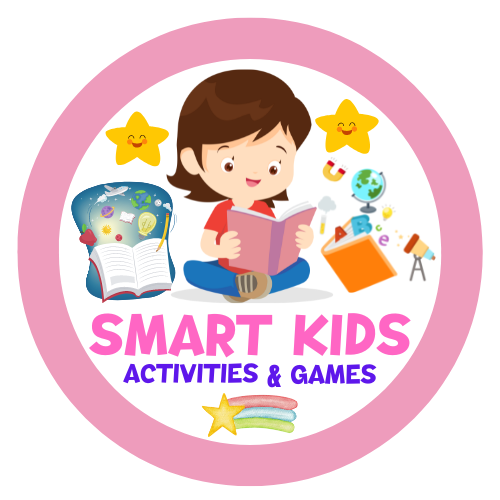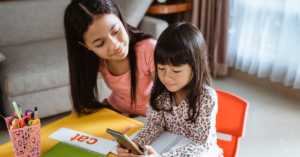Key Takeaways:
- Home learning, or homeschooling, is an educational approach where children receive their education at home.
- Home learning allows for personalized education tailored to the unique needs and interests of the child.
- It offers a flexible schedule and promotes a positive learning environment.
- Home learning fosters important life skills, such as self-discipline and self-motivation.
- It provides a nurturing environment for children to thrive academically, emotionally, and socially.
Freedom of Learning
Home learning provides a unique opportunity for individuals to experience the freedom of learning in a self-regulated study environment. Unlike traditional schools, where students adhere to fixed schedules and curriculum, home learners have the convenience to study at their own pace and explore topics that interest them the most. This flexibility allows for increased time and energy dedicated to learning, as there are no distractions or time wasted in transit. Furthermore, being in the comfort of their own homes allows students to engage in deeper reflection and solitude. They can fully focus on their studies without negative influences from peers or external factors. This sense of solitude enables learners to delve into their subjects with undivided attention, leading to a deeper understanding and retention of knowledge.Home learning offers individuals the freedom to shape their educational journey, resulting in a more personalized and enriching learning experience.
Improved Social Relations
One of the significant advantages of home learning is the improvement in social relations for children. While traditional schools provide opportunities for socialization, home learning opens doors to a wider range of interactions beyond physical school settings. Virtual education platforms play a crucial role in facilitating connections and fostering international awareness. Through these platforms, children can connect with peers from different parts of the world, broadening their understanding of diverse cultures and perspectives. This exposure promotes empathy and a global mindset, essential qualities for navigating an interconnected world. Furthermore, homeschooling communities offer a supportive network for families who choose home learning. These communities provide opportunities for children to engage in group activities and collaborate on various projects. By participating in shared learning experiences, children enhance their social skills, including communication, teamwork, and problem-solving. Home learning also integrates real-world experiences into the educational journey. Whether it’s exploring museums, engaging in community service, or pursuing personal interests, children have more opportunities to interact with the world around them. These real-world experiences promote empathy, as children develop a better understanding of the challenges faced by others and become more compassionate individuals.Benefits of Improved Social Relations:
* Enhanced international awareness and cultural understanding * Development of empathy and compassion * Strengthened social skills through collaboration and teamwork * Exposure to real-world experiences for a well-rounded educationThrough improved social relations, home learning nurtures children’s social skills, enhances their empathy, and prepares them to become active and compassionate members of society.
| Benefits of Improved Social Relations in Home Learning | Description |
|---|---|
| Enhanced International Awareness | Virtual education platforms and homeschooling communities foster connections with peers from diverse cultural backgrounds, promoting global awareness and understanding. |
| Instilled Empathy | Engaging in real-world experiences and interacting with individuals from different walks of life help children develop empathy and a compassionate mindset. |
| Strengthened Social Skills | Collaboration and teamwork within homeschooling communities and interactive virtual platforms cultivate essential social skills like communication, cooperation, and problem-solving. |
| Real-World Experiences | Home learning integrates real-life experiences, such as museum visits and community involvement, providing children with a well-rounded education and a deeper understanding of the world. |
Innovative Learning Concepts
Home learning fosters innovative learning concepts that go beyond the traditional education patterns. It provides children with opportunities to engage in hands-on activities and explore real-life situations, resulting in a better understanding of the world around them. Early childhood learners thrive in a home learning environment as they are encouraged to explore their surroundings and engage in creative learning experiences. By using their imagination and critical thinking skills, children can develop a deeper understanding of various concepts.“Home learning allows children to step out of the confines of a classroom and apply their knowledge in real-life situations,” says Jane Adams, a renowned child psychologist.Through innovative learning concepts, children can make connections between what they learn and how it applies to their everyday lives. Whether it’s building a model to understand scientific principles or using maps to explore different countries, home learning provides a platform for practical learning experiences.
Hands-On Activities Enhance Learning
One of the key aspects of innovative learning concepts in home education is the emphasis on hands-on activities. Children actively participate in experiments, projects, and interactive tasks that bring learning to life.“Hands-on activities enable children to develop a better understanding of abstract concepts by experiencing them firsthand,” says Dr. Sarah Johnson, an expert in early childhood development.By engaging in hands-on activities, children develop critical thinking, problem-solving, and motor skills. Whether it’s planting a garden to learn about biology or constructing a model bridge to grasp engineering principles, hands-on activities promote active learning and creativity.
Real-Life Situations for Practical Learning
Home learning provides children with the opportunity to learn through real-life situations. From grocery shopping to cooking dinner, everyday activities become learning experiences that promote a deeper understanding of various concepts.“Learning in realistic situations helps children connect theoretical knowledge to real-world applications,” explains Dr. Michael Anderson, a leading educational researcher.Children can apply math skills while measuring ingredients for a recipe, practice communication and negotiation during a family discussion, or develop problem-solving abilities by planning a family outing. By integrating learning into everyday life, children gain a holistic understanding of how knowledge is used in practical situations. Home learning encourages children to think outside the box, explore their interests, and develop a lifelong love for learning. By embracing innovative learning concepts, parents can provide their children with a rich and engaging educational experience that nurtures their curiosity and helps them better understand the world.
Encourages Sharing
Home learning creates an environment that encourages sharing among children, establishing friendships, and promoting peaceful play. Sharing is a valuable social skill that helps children develop empathy and consideration for others’ needs. Through sharing, children learn about fairness and compromise, essential aspects of interpersonal relationships and conflict resolution. Building these social skills from an early age sets a strong foundation for positive interactions and healthy friendships.Improved Security
With increasing school safety concerns and the impact of the global pandemic, parents are seeking educational options that prioritize the security and well-being of their children. Home learning has emerged as a viable solution, offering improved security compared to traditional schools. One of the main advantages of home learning is the ability to create a safe and secure environment for children. Parents can ensure that their children are protected from potential physical threats or dangers that may exist in traditional school settings. Online schools have gained popularity as a safe alternative during the pandemic. These institutions provide a virtual learning platform that eliminates the need for physical contact, reducing the risk of exposure to infectious diseases. Furthermore, home learning allows parents to have greater control over their children’s educational experience. With increased parental control, families can implement safety measures, such as restricted access to inappropriate content or online interactions, ensuring a secure online environment. By embracing home learning, parents can address their concerns about school safety while providing their children with high-quality education in a secure setting, even during these challenging times.The Uniqueness of Home Learning
Home learning offers a unique and personalized approach to education, allowing students to thrive in a regulated pace that suits their individual needs. Unlike traditional classrooms, where students must keep up with a predetermined curriculum, home learning enables students to learn at their own speed, ensuring a deeper understanding of the material. Studies have shown that home-educated students often achieve higher test results compared to their peers in traditional schools. This can be attributed to the focused attention and tailored instruction provided in a home learning environment, which allows students to excel academically. Furthermore, home education encourages active learning through hands-on activities, making the learning process more engaging and interactive. Whether it’s conducting science experiments, visiting museums, or participating in community service, home learners have the freedom to explore various subjects in a practical and meaningful way. In addition to promoting active learning, home learning also minimizes distractions that can hinder concentration in traditional classrooms. By eliminating disruptive classmates, noise, and other external influences, home learners are better able to focus on their studies and maximize their learning potential. Overall, the uniqueness of home learning lies in its ability to provide a regulated pace, improved test results, learning with activities, and minimized distractions. These advantages combine to create an educational experience that is tailored to the individual needs of the student, fostering enhanced academic performance and a deeper understanding of the subject matter.| Advantages of Home Learning | |
|---|---|
| Regulated Pace | Allows students to learn at their own speed, ensuring a deeper understanding of the material. |
| Improved Test Results | Studies have shown that home-educated students often achieve higher test scores compared to their peers in traditional schools. |
| Learning with Activities | Encourages active learning through hands-on activities, making the learning process more engaging and interactive. |
| Minimizing Distractions | Eliminates disruptive classmates, noise, and other external influences, allowing for better focus and concentration. |
Importance of the Home Learning Environment
The home learning environment plays a crucial role in a child’s development and learning. It is within this environment that children are nurtured and provided with the necessary support to thrive academically, socially, and emotionally. Creating a positive home learning environment fosters positive attitudes towards learning. When children feel supported and encouraged in their studies, they develop a genuine curiosity for knowledge. This curiosity drives them to explore new concepts and ask questions, leading to a deeper understanding of the subjects they are learning. Confidence is vital for a child’s overall well-being and academic success. By providing a nurturing environment at home, children are more likely to develop self-confidence in their abilities. They feel safe to take risks, make mistakes, and grow from them. This boost in confidence empowers children to approach challenges with a positive mindset and persevere through difficult tasks. Positive interactions with caregivers and positive role models at home also play a significant role in a child’s development. When children witness and participate in positive interactions, such as open communication, active listening, and mutual respect, they learn essential social skills. They develop the ability to express themselves effectively, empathize with others, and build healthy relationships. Furthermore, play and everyday experiences provide valuable learning opportunities for children. Through play, children engage in imaginative thinking, problem-solving, and critical reasoning. Everyday experiences, such as cooking, gardening, or family outings, allow children to connect classroom knowledge to real-world applications. This connection enhances their understanding of concepts, making learning more meaningful and relevant. In summary, the home learning environment sets the foundation for a child’s educational journey. By fostering positive attitudes, curiosity, and confidence, and providing opportunities for positive interactions, play, and everyday experiences, parents and caregivers create a nurturing space where children can thrive academically and personally.Parental Involvement in Home Learning
Creating a positive home learning environment requires the active involvement of parents. When parents show interest in their child’s work and provide support, it has a significant impact on their child’s learning outcomes. By setting aside dedicated time and space for study, minimizing interruptions, and offering homework support, parents contribute to the success of home learning. Parental involvement plays a crucial role in promoting a positive home learning environment. When parents show genuine interest and actively engage with their child’s education, it fosters a sense of value and importance in the child. This parental support helps children develop a positive attitude towards learning and enhances their overall academic performance. Supporting study at home involves creating a space conducive to learning and providing the necessary resources. Designating a quiet area where the child can focus on their studies without distractions is essential. Stocking up on books, educational materials, and technology tools further enhances the learning experience. Parents can also show interest in their child’s studies by asking about their day, discussing what they are learning, and encouraging open dialogue. This active engagement demonstrates that learning is valued and promotes a positive attitude towards education.“When parents take an active interest in their child’s education, it creates a strong foundation for success.”– Maria Johnson, Education ExpertOne significant way parents can promote learning is by providing homework support. This includes helping their child understand assignments, answering questions, and offering guidance when needed. By taking an active role, parents not only assist with completing homework but also help reinforce the concepts and skills learned in school.
Benefits of Parental Involvement in Home Learning:
- Enhanced academic performance
- Improved study habits and discipline
- Increased motivation and engagement
- Strengthened parent-child bond
- Promotion of lifelong learning skills
| Ways Parents Can Support Home Learning | Benefits |
|---|---|
| Show genuine interest in child’s work | Develops a positive attitude towards learning |
| Create a dedicated study area | Minimizes distractions and promotes focus |
| Stock up on educational resources | Enhances the learning experience |
| Engage in conversations about learning | Promotes open dialogue and learning discussions |
| Provide homework support | Reinforces concepts and skills learned in school |
Promoting Learning through Daily Routines
Incorporating learning into daily routines is a powerful way to enhance a child’s educational experience. By integrating educational activities and playful learning opportunities into everyday tasks, parents can foster a love for learning and provide their children with valuable skills. Children naturally learn through play, and everyday activities can be transformed into fun and educational experiences. By infusing learning into daily routines, parents can create a rich environment that promotes active participation, critical thinking, and problem-solving. Here are some examples of how everyday activities can be turned into learning opportunities:- During meal preparation, involve your child in measuring ingredients, discussing nutrition, and exploring different flavors.
- Turn car rides into “question and answer” sessions, encouraging your child to observe their surroundings and ask curious questions.
- Engage in art projects and crafts that encourage creativity and fine motor skills development.
- Encourage reading by setting aside dedicated time for story sessions or by incorporating reading into bedtime routines.
- Involve your child in household chores, such as sorting laundry, setting the table, or organizing toys, to promote responsibility and practical life skills.
| Benefits of Promoting Learning through Daily Routines |
|---|
| Encourages a love for learning |
| Promotes active participation and engagement |
| Develops critical thinking and problem-solving skills |
| Nurtures independence and responsibility |
| Enhances fine motor skills and coordination |
| Fosters creativity and imagination |
Supporting Safety in the Home Learning Environment
Ensuring a safe home learning environment is crucial for the well-being and development of your child. To prevent childhood injuries and create a secure space for learning, parents and caregivers can implement specific safety measures and incorporate safety tips into their family routines. Child Development and Injury Prevention: Children’s developmental stages play a significant role in determining potential safety hazards. As they grow and explore their surroundings, their curiosity can lead to accidents. It is important to be aware of their developmental milestones and address safety concerns accordingly. By taking preventive measures, parents can reduce the risk of accidents and injuries.- Create a Safe Physical Environment: Remove any potential hazards, such as sharp objects, toxic substances, or unstable furniture, from the learning area. Keep cords out of reach and secure any heavy furniture or appliances that could tip over. Install safety gates and window guards, and childproof electrical outlets.
- Supervise Active Learning: Encourage physical activity and hands-on learning, but ensure proper supervision to minimize the risk of accidents. For example, when engaging in science experiments or art projects, provide guidance and ensure the materials used are safe for the child’s age.
- Establish Family Rules: Set clear rules and expectations regarding safety at home. Teach your child about potential dangers, such as fire hazards or the safe use of electrical appliances. Create a safe space for your child to ask questions and discuss safety concerns.
- Teach Proper Handling of Tools: If your child is involved in activities that require tools or equipment, teach them how to handle them safely. Whether it’s using scissors, gardening tools, or cooking utensils, provide proper guidance, and promote responsible use.
- Ensure Online Safety: With the increasing reliance on technology for home learning, it is crucial to address online safety. Teach your child about internet safety, monitor their online activities, and utilize parental control features to protect them from potential online threats.
- Establish a Daily Safety Check: Before each learning session, conduct a quick safety check of the learning area to ensure it is free from hazards. This can become a routine practice that involves both you and your child, encouraging their active participation in creating a safe environment.
- Encourage Proper Posture: Teach your child about the importance of maintaining proper posture while studying. Use ergonomic furniture and encourage regular breaks to prevent strain on their developing bodies.
- Promote Healthy Tech Habits: Establish screen time limits and encourage frequent breaks from electronic devices. Teach your child about the importance of maintaining good eye health, posture, and practicing appropriate online behavior.
- Incorporate First Aid Knowledge: Ensure your child has a basic understanding of first aid procedures. Teach them how to respond to minor injuries and whom to contact in case of emergencies.
- Practice Fire Safety: Establish fire safety protocols, including identifying escape routes, practicing fire drills, and teaching your child how to safely use fire extinguishers.
Conclusion
Home learning offers numerous benefits that contribute to personalized education, family involvement, academic success, and overall development in children. By embracing home learning, families create a positive and enriching educational experience for their children. One of the key advantages of home learning is the opportunity for personalized education. Students can learn at their own pace, focusing on their strengths and areas of interest. This individualized approach allows for targeted instruction and a deeper understanding of subjects. Family involvement is another crucial aspect of home learning. Parents have the opportunity to actively participate in their child’s education, providing support and guidance. This strong family connection fosters a sense of belonging and enhances the learning experience. Moreover, home learning contributes to academic success. With fewer distractions and the ability to tailor instruction, students thrive in a focused and conducive environment. The combination of personalized education and dedicated support often leads to improved academic performance. Lastly, home learning promotes overall development in children. From nurturing emotional well-being to fostering creativity and critical thinking, the home learning environment helps children grow holistically. It allows for the integration of everyday experiences and activities into the learning process, making education more meaningful and engaging.FAQ
What is home learning and why is it important?
Home learning encompasses all you and your family do to influence your child’s growth and learning. It fosters good attitudes towards learning, curiosity, and self-confidence in children.
What are the advantages of learning at home?
Learning at home offers the most freedom, allowing students to study at their own pace and have the flexibility to start and stop learning without waiting for a bell. It saves time and energy and provides a deeper reflection and elimination of negative influences.
How does home learning improve social relations?
Home learning allows children to engage with a wide range of individuals outside traditional school settings. Virtual education platforms and homeschooling communities provide opportunities for building international awareness and instilling empathy. Interactions with family and friends’ real-world experiences nurture social skills.
How does home learning encourage innovation and creativity?
Home learning activities can be highly imaginative and creative compared to traditional education patterns. Early childhood learners can explore their environment, engage in hands-on activities, and use real-life situations to better understand the world around them. Home learning encourages innovation and critical thinking.
What role does home learning play in sharing and social skills development?
Home learning teaches children the value of sharing, establishing friendships, and resolving conflicts peacefully. Through sharing, children learn about fairness, compromise, and consider the needs of others. Sharing is an important aspect of social skills development.
How does home learning ensure improved security?
Home learning provides a safe and secure environment, addressing concerns about traditional school safety and the current global pandemic. Parents have embraced educational options like online schools to ensure the safety of their children. Home learning offers parental control and the ability to protect their children from potential threats.
What are the unique advantages of home learning?
Home learning offers the ability to learn at a regulated pace, and studies have shown that home-educated students often achieve higher test results. Home education encourages learning through activities and minimizes distractions, leading to improved concentration.
How does the home learning environment impact a child’s development?
The home learning environment plays a crucial role in a child’s development and learning. It fosters positive attitudes, curiosity, and confidence. Interactions with caregivers and positive role models are vital in creating a nurturing environment. Play and everyday experiences provide opportunities for children to make sense of their world.
How does parental involvement contribute to home learning?
Parental involvement is key to creating a positive home learning environment. By showing an interest in their child’s work and providing support, parents can significantly impact their child’s learning outcomes. Setting aside time and space for study, minimizing interruptions, and providing homework support contribute to the success of home learning.
How can daily routines promote learning in a home environment?
Incorporating learning into daily routines enhances a child’s educational experience. Simple activities like play and everyday tasks provide learning opportunities. Parents can encourage active participation and engage children in tasks that promote skill development and problem-solving.
How can safety be ensured in the home learning environment?
Ensuring safety in the home learning environment is essential. Parents and caregivers can take steps to prevent childhood injuries by implementing safety measures. Safety tips should be tailored to the child’s developmental stage and integrated into family routines.
What are the benefits of home learning?
Home learning offers numerous benefits, including personalized education, family involvement, and academic success. It provides a safe and nurturing environment, fostering overall development in children. By embracing home learning, families can create a positive and enriching educational experience for their children.
Download free activities and teaching resources Click Here
You may also be interested in
AI in Kids Education: Trends & Benefits
Exploring Technology’s Role in Education Today
Unlocking Potential: A Guide for Every Substitute Teacher
Embracing Diversity: Importance of Inclusive Education
How to Celebrate Student Achievement: Creative Ideas
Source Links
- https://eclkc.ohs.acf.hhs.gov/learning-environments/article/learning-home
- https://education.gov.scot/parentzone/learning-at-home/home-learning-environment/
- https://www.tutoroot.com/blog/what-is-home-learning-and-importance-of-home-learning/







